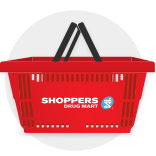Cardipin is used alone or together with other medicines to treat angina (chest pain) and high blood pressure (hypertension). High blood pressure adds to the workload of the heart and arteries. If it continues for a long time, the heart and arteries may not function properly. This can damage the blood vessels of the brain, heart, and kidneys, resulting in a stroke, heart failure, or kidney failure. High blood pressure may also increase the risk of heart attacks. These problems may be less likely to occur if blood pressure is controlled. Cardipin is a calcium channel blocker. It affects the movement of calcium into the cells of the heart and blood vessels. As a result, Cardipin relaxes blood vessels and increases the supply of blood and oxygen to the heart while reducing its workload.
This medication is taken by mouth with or without food, usually 3 to 4 times daily or as directed by your doctor. Dosage is based on your medical condition and response to treatment. Adults: The usual initial antihypertensive oral dose of Cardipin is 5 mg once daily, and the maximum dose is 10 mg once daily. Small, fragile, or elderly patients, or patients with hepatic insufficiency may be started on 2.5 mg once daily and this dose may be used when adding Cardipin to other antihypertensive therapy. Adjust dosage according to blood pressure goals. In general, wait 7 to 14 days between titration steps. Titrate more rapidly, however, if clinically warranted, provided the patient is assessed frequently. Angina: The recommended dose for chronic stable or vasospastic angina is 5–10 mg, with the lower dose suggested in the elderly and in patients with hepatic insufficiency. Most patients will require 10 mg for adequate effect. Coronary Artery Disease: The recommended dose range for patients with coronary artery disease is 5–10 mg once daily. In clinical studies, the majority of patients required 10 mg. Children: The effective antihypertensive oral dose in pediatric patients ages 6–17 years is 2.5 mg to 5 mg once daily. Doses in excess of 5 mg daily have not been studied in pediatric patients.
Before taking Cardipin, tell your doctor if you have congestive heart failure or liver disease. Drinking alcohol can further lower your blood pressure and may increase certain side effects of Cardipin. If you are being treated for high blood pressure, keep using this medication even if you feel well. High blood pressure often has no symptoms. You may need to use blood pressure medication for the rest of your life. Cardipin is only part of a complete program of treatment that may also include diet, exercise, weight control, and other medications. Follow your diet, medication, and exercise routines very closely. Tell your doctor about all other heart or blood pressure medications you are taking. Your chest pain may become worse when you first start taking Cardipin or when your dose is increased. Call your doctor if your chest pain is severe or ongoing.
Not avaiable

Free standard shipping for orders over $50

Check in store availability
Adding product to your cart
Cardipin is used alone or together with other medicines to treat angina (chest pain) and high blood pressure (hypertension). High blood pressure adds to the workload of the heart and arteries. If it continues for a long time, the heart and arteries may not function properly. This can damage the blood vessels of the brain, heart, and kidneys, resulting in a stroke, heart failure, or kidney failure. High blood pressure may also increase the risk of heart attacks. These problems may be less likely to occur if blood pressure is controlled. Cardipin is a calcium channel blocker. It affects the movement of calcium into the cells of the heart and blood vessels. As a result, Cardipin relaxes blood vessels and increases the supply of blood and oxygen to the heart while reducing its workload.
This medication is taken by mouth with or without food, usually 3 to 4 times daily or as directed by your doctor. Dosage is based on your medical condition and response to treatment. Adults: The usual initial antihypertensive oral dose of Cardipin is 5 mg once daily, and the maximum dose is 10 mg once daily. Small, fragile, or elderly patients, or patients with hepatic insufficiency may be started on 2.5 mg once daily and this dose may be used when adding Cardipin to other antihypertensive therapy. Adjust dosage according to blood pressure goals. In general, wait 7 to 14 days between titration steps. Titrate more rapidly, however, if clinically warranted, provided the patient is assessed frequently. Angina: The recommended dose for chronic stable or vasospastic angina is 5–10 mg, with the lower dose suggested in the elderly and in patients with hepatic insufficiency. Most patients will require 10 mg for adequate effect. Coronary Artery Disease: The recommended dose range for patients with coronary artery disease is 5–10 mg once daily. In clinical studies, the majority of patients required 10 mg. Children: The effective antihypertensive oral dose in pediatric patients ages 6–17 years is 2.5 mg to 5 mg once daily. Doses in excess of 5 mg daily have not been studied in pediatric patients.
Before taking Cardipin, tell your doctor if you have congestive heart failure or liver disease. Drinking alcohol can further lower your blood pressure and may increase certain side effects of Cardipin. If you are being treated for high blood pressure, keep using this medication even if you feel well. High blood pressure often has no symptoms. You may need to use blood pressure medication for the rest of your life. Cardipin is only part of a complete program of treatment that may also include diet, exercise, weight control, and other medications. Follow your diet, medication, and exercise routines very closely. Tell your doctor about all other heart or blood pressure medications you are taking. Your chest pain may become worse when you first start taking Cardipin or when your dose is increased. Call your doctor if your chest pain is severe or ongoing.
Not avaiable
You may also like
You may also like
Rest assured, we offer unparalleled value with our price guaranteed.
100% Secure payments with 256-bit SSL Encryption. We've got you covered.
We stand by your satisfaction with our exchange or money-back guarantee on all orders.
Pair text with an image to focus on your chosen product, collection, or blog post.
By completing this form, you are signing up to receive our emails and can unsubscribe at any time.

